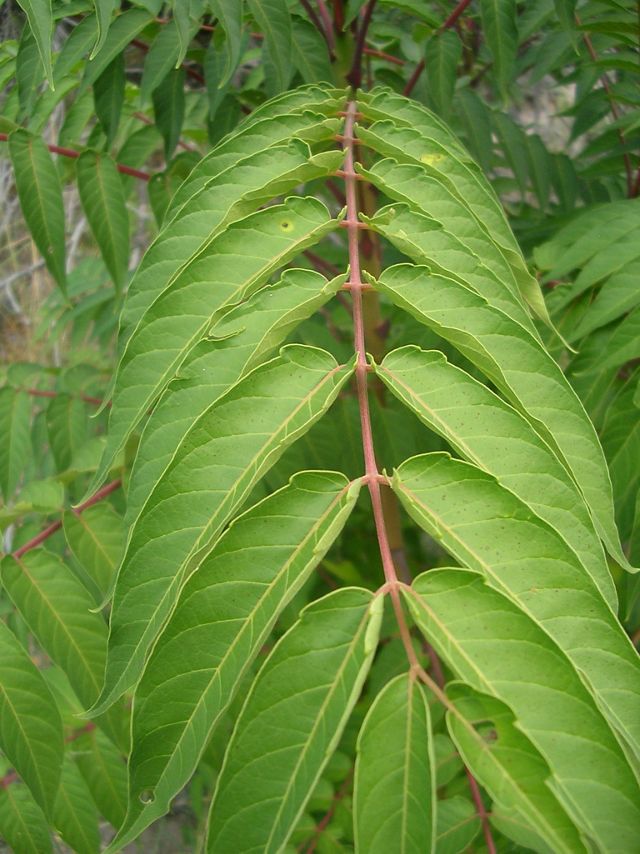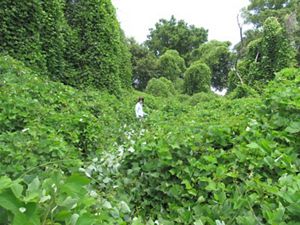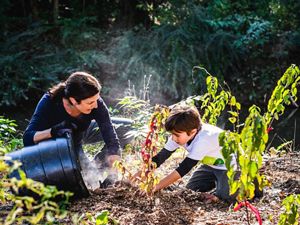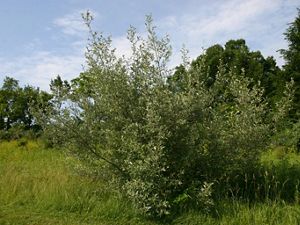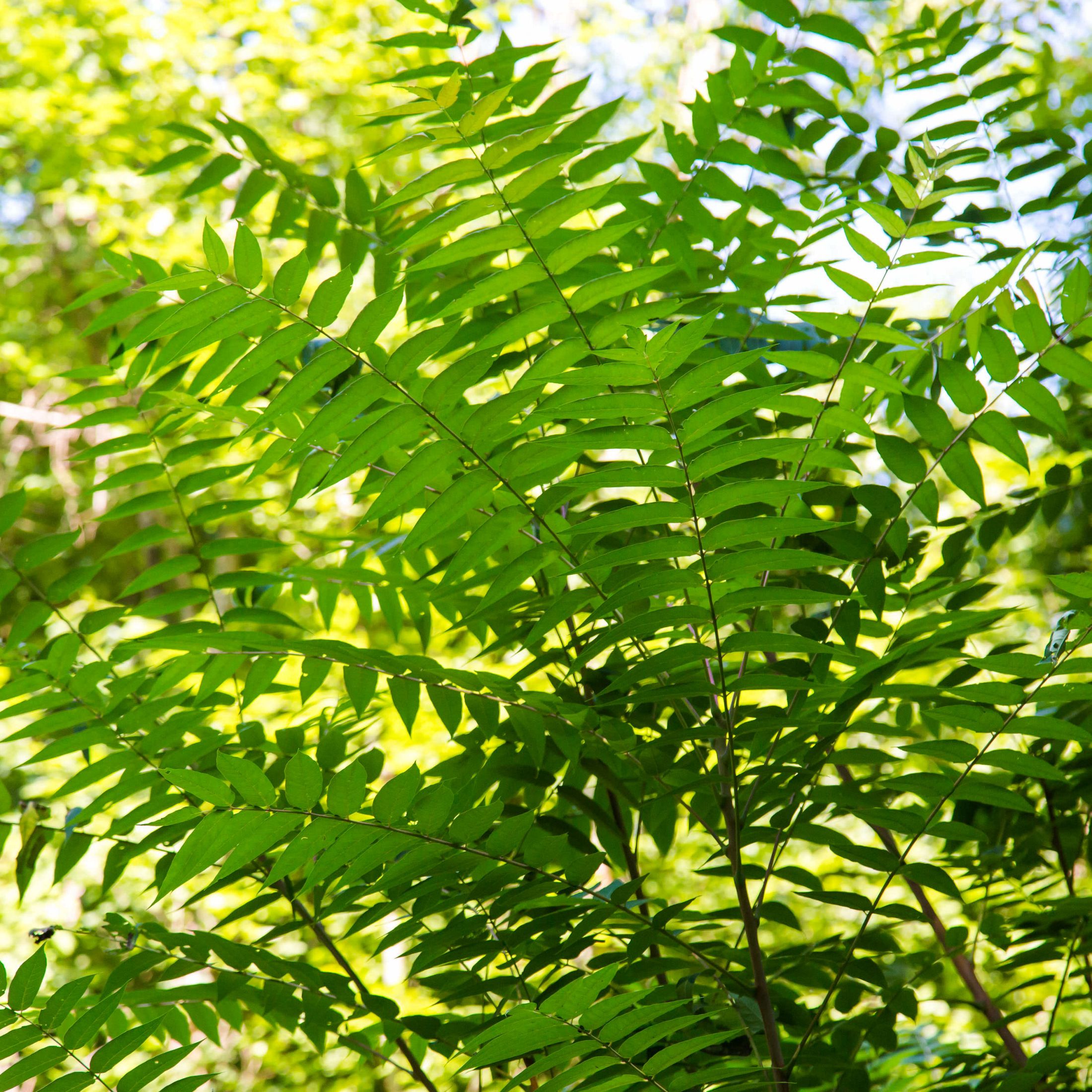
Though its name makes it sound divine, the invasive tree of heaven is no angel. Learn all about this devilish invader.
What is the Tree of Heaven?
The tree of heaven (Ailanthus altissima) is a rapidly growing deciduous tree native to China that has become a widespread invasive species across North America.
Known by a number of names including stinking sumac, Chinese sumac, varnish tree and stink tree, the plant releases a strong, offensive smell, particularly from its flowers.
The tree of heaven was brought from China to the United States in the late 1700s as a horticultural specimen and shade tree. Its ease of establishment, rapid growth and absence of insect or disease problems made it popular when planning urban landscaping.
These same traits have led it to spread aggressively throughout the United States, crowding out native plants wherever it establishes itself.
Quote
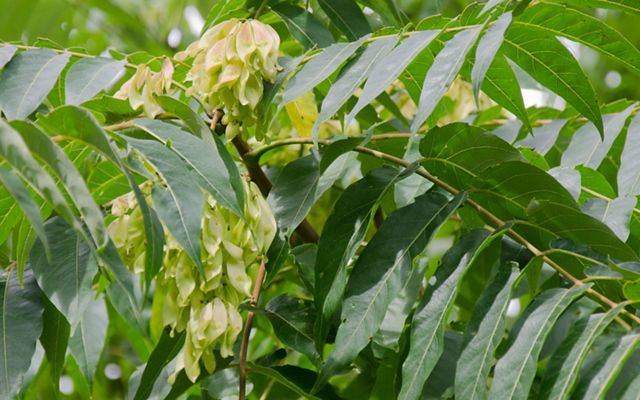
The tree of heaven crowds out native species and secretes a chemical into the soil that is toxic to surrounding plants.
Why is the tree of heaven a problem?
The tree of heaven is a problem because it reproduces very quickly and aggressively inhibits (and can even kill) native plants near it. This invasive plant produces an overly abundant amount of seeds, crowds out native species with its dense thickets and secretes a chemical into the soil that is toxic to surrounding plants.
When native plants are hindered or killed, it upsets the balance of the native ecosystem and biodiversity, potentially leading to extinctions of native plant and animal species across the whole ecosystem.
In fact, invasive species have directly contributed to the decline of 42% of the threatened and endangered species in the United States.
The tree of heaven affects people in many ways. Its aggressive root system can cause damage to pavement, sewers and building foundations.
The plant has also helped advance the spread of the spotted lanternfly, an invasive insect also originally from China. These insects seek out the tree of heaven as a place to lay their eggs. The spotted lanternfly, currently spreading across Pennsylvania and the Mid-Atlantic U.S., feeds on and damages many species of native and fruit-bearing trees.
Climate change’s role with invasive species
Climate change is a threat to people and nature in many ways, one of which is how it can aid the spread of invasive species.
The tree of heaven springs up quickly after forest disturbances such as extreme weather or spongy moth infestations.
Climate change may be enabling these disturbances by disrupting weather patterns, leading to more extreme weather like stronger storms and longer droughts, which allow the spongy moth to thrive.
Controlling and managing the tree of heaven
Thankfully there are multiple ways to get rid of the tree of heaven. The most effective way to control tree of heaven is to pull seedlings by hand before the taproot develops. If the plant has matured, cutting alone will only help temporarily by reducing its ability to spread.
It’s important to correctly identify the tree of heaven since it looks similar to some native species. Several native trees and shrubs also have pinnately compound leaves (arranged in pairs across the plant’s stem) such as sumac, ash and black walnut.
It can be distinguished from these native species by its fuzzy, reddish-brown twigs and clusters of light green seed pods.
How can I help?
The Nature Conservancy restores and manages land for native species, including invasive plant species removal—throughout the United States. You can help by supporting our conservation efforts. You can also help by cleaning your hiking boots between hikes to get rid of hitchhiking seeds.

Stay connected for the latest news from nature.
Get global conservation stories, news and local opportunities near you. Check out a sample Nature News email.
